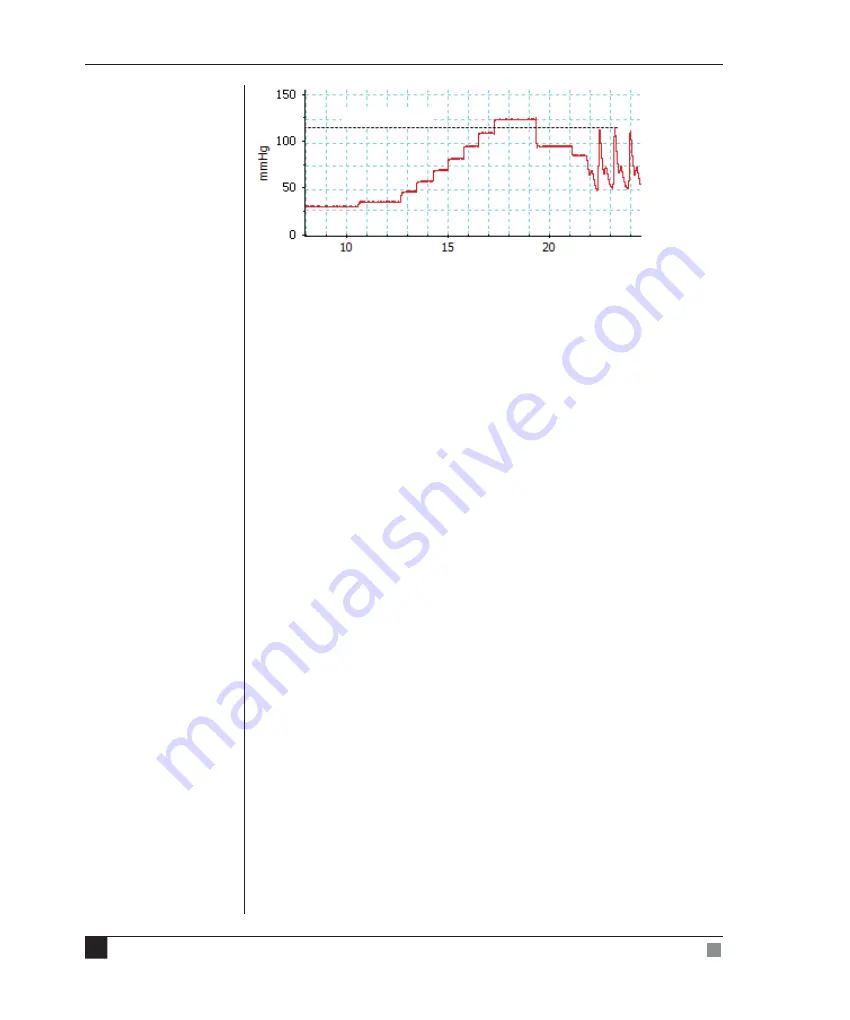
54
Human NIBP Nano
Owner’s Guide
Systolic pressure
If, however, the arterial blood pressure is not stable, or in case of
arrhythmias, movement artifacts, or contracted arteries, the Human NIBP
Nano may need to explore the pressure-diameter relationship of the finger
artery at higher pressure levels during the staircase procedure. Therefore,
the similarity of the pressure during the last step of the staircase and the
finger arterial systolic pressure, as shown in Figure A–9, is not always
present.
Brachial arterial pressure
If simultaneous tracings of finger arterial pressure and brachial pressure
are available, the pressure tracings usually look very similar, apart from
a (small) level shift and sometimes some pulse amplification (see Figure
A–10 and Figure A–11).
Pulse wave distortion
Pressure pulsations are progressively distorted on their way towards the
periphery. The shape of the pressure wave is changed both by reflection
and by a pressure gradient due to branching of the arterial tree. Peripheral
reflection results in a frequency-dependent amplification of the pressure
wave; this leads to increased systolic pressure in a heart rate-dependent
manner [Bos 1995]. Hence, finger blood pressure waveforms are more
undulatory than brachial arterial pressure waveforms because of
reflections of the systolic pulse wave in the arterial system of the arm.
However, when finger pressure is compared to the intra-radial pressure
this distortion is less pronounced [Wesseling 1985].
The next two figures (Figure A–10 and Figure A–11) provide two examples
of simultaneous recordings of brachial and non-invasive finger arterial
pressure in an elderly woman and a young man. Note the small delay
between the brachial pressure wave and the finger pressure wave is due to
time needed for the pulse wave to travel along the arm artery.
Figure A–9
Relationship between
fi nger arterial systolic
pressure and start-up
staircase procedure.






























